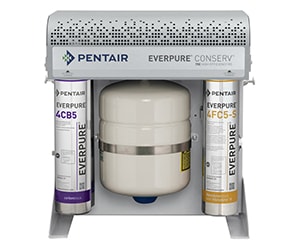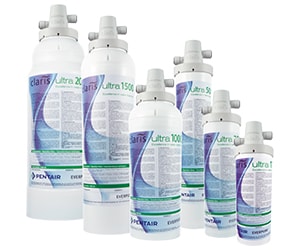We use cookies to make your experience better. To comply with the new e-Privacy directive, we need to ask for your consent to set the cookies. Learn more.
How Reverse Osmosis Works
Reverse Osmosis (RO) is the process of purifying water through a semi-permeable membrane to remove unwanted contaminants and molecules. In regular osmosis, as demonstrated in a thousand high school science lessons across the land, freshwater and salt (or sugar) water are separated by a semi-permeable membrane. The water migrates through the membrane from the weak to the strong solution until the water is equally salty (or sugary) on both sides.
This process can be reversed if pressure is applied to the stronger solution. When that happens, water migrates through the semi-permeable membrane away from the dissolved solids. It is this process that is used in reverse osmosis to separate dissolved salts and minerals from your feed water. It’s more effective than using inline filter cartridges (which usually use carbon as filter media) and results in up to 98% rejection of dissolved contaminants.
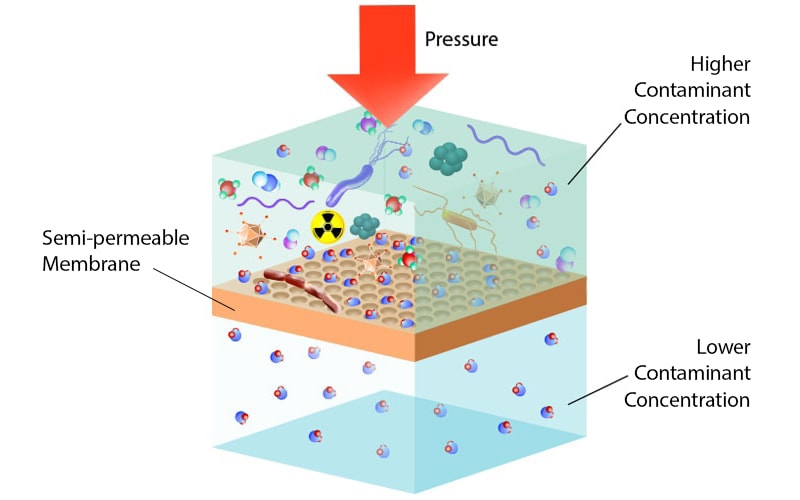
How Reverse Osmosis Works
Right, that’s the science lesson out of the way…
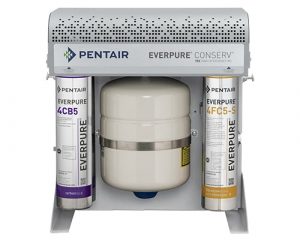
Pentair Everpure Conserv 75E – A Reverse Osmosis System Designed for Espresso
What Minerals RO Can Remove From The Tap Water
While it’s well known that municipal tap water contains chlorine and that this can impart a chemically or medicinal taste, it’s less well known that various salts and minerals (total dissolved solids or TDS) can also be present in mains tap water.
The extraction of flavour from oils in the coffee bean is complicated by the presence of these different minerals in the feed water. Though small amounts of certain minerals such as calcium and magnesium can actually aid extraction of flavour, others such as chlorides and sulphates can cause coffee to become sour or bitter - not good news when you’ve forked out for incredibly rare and expensive coffee beans grown by the indigenous tribes of the Chalatenango Mountains in El Salvador.
Prevention is Better than Cure
As well as a deleterious effect on the flavour of your coffee, these dissolved minerals can also damage your equipment. Everyone’s familiar with the scale build-up that occurs inside domestic kettles in hard water areas. Well, the same thing is happening inside the boiler of your espresso machine. Though a descaling regime can remove scale from inside a machine, the highly acidic chemicals required can be difficult to handle safely and tricky to dispose of responsibly. Repeated use of strong descaling solutions can also reduce equipment lifespan.
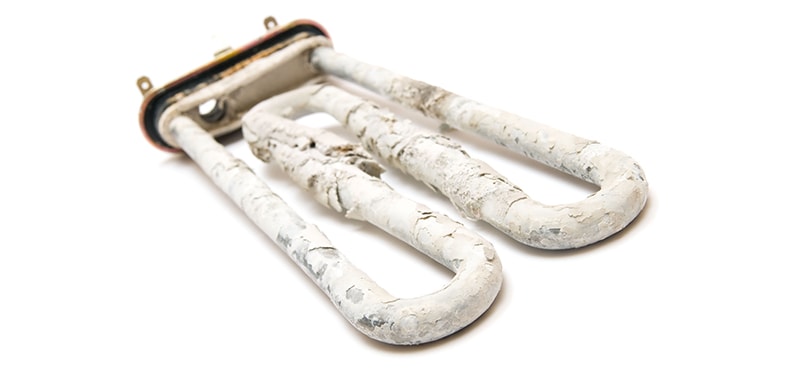
Scaled Up Heating Element
The old adage that ‘prevention is better than cure’ is clearly appropriate here. Whether using in-line filtration to reduce mineral content or reverse osmosis to strip contaminants out completely, dealing with the dissolved minerals that cause scale before they reach your equipment is preferable and usually more cost effective than solving the issues that arise from hard scale formation.
Getting the Measure of the Problem
To find out whether a reverse osmosis system will help you solve taste or hard scale issues, first you must find out how hard your water is. It’s recommended to obtain a proper water test kit to get a clear measurement of the amount of total dissolved solids in your water supply. TDS is measured in ppm (parts per million) and according to the Specialty Coffee Association of America (SCAA), a suitable ppm for feed water in coffee applications should be around 150ppm, though this doesn’t take into account the type of minerals in your water, with some being more troublesome than others when brewing great tasting coffee.

Basic TDS Meter
So, why does reverse osmosis make great tasting coffee?
While coffee connoisseurs are keen to discuss sources and types of coffee bean (and occasionally how many civets it’s been through), it’s often forgotten that a cup of coffee is 98% water. The invisible chemicals and minerals that are dissolved in your feed water can have a dramatic and occasionally disastrous effect on the taste of your coffee. Modern reverse osmosis systems allow brewers to remove the undesirable contaminants from coffee machine feed water while keeping certain minerals that aid extraction of flavour from ground coffee and improve flavour.
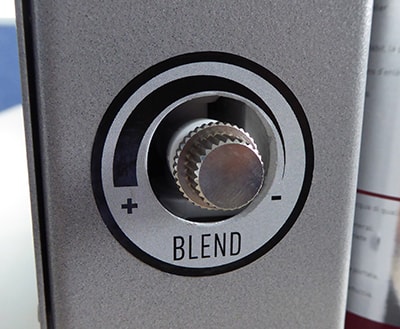
Blend Valve
Modern RO systems have been designed especially with coffee in mind and as such they feature clever blending valves. A blending valve allows a variable amount of water which has bypassed the reverse osmosis system (but still been treated by a carbon filter) to enter back into the feed water ensuring that necessary amounts of beneficial minerals are included but chlorine and particulates are removed. By allowing brewers to tailor their water in this manner, different water profiles can be tried in order to find the one that works best with different coffee blends and machine types.
Such is the improvement in both coffee quality and scale reduction that some roasters / suppliers now require their customers to use reverse osmosis systems, especially in hard water areas such as London and the South East.
Site Specific Filtration
After working with foodservice applications, whether coffee, steam and combi-oven or warewashers, we’ve always found that what works on one site usually doesn’t work on another site just down the road. Regional water types, often differing widely over a surprisingly small geographical area mean that different treatment methods work better on superficially similar installations. As well as water type, flow rate and the volume of water required should also be taken into consideration when specifying a water treatment system, RO or otherwise.
For this reason, we’d always recommend testing your water and, crucially speaking to an expert before deciding which system to install.
Perfect for Coffee Purists

So in conclusion, RO is a great solution for giving you ultimate flexibility, allowing you to tailor your water with a high degree of accuracy. As with any system that offers more options and greater ‘tweakability’ it is possible to get it wrong unless you know what you’re doing though. Think of it as a highly tuned racing car: set it up correctly and it’s possible to obtain much better performance than a regular road car - but set it up wrong and you’ll upset its balance and make it difficult to drive. Like any highly tuned machine, it will also need regular tweaks to keep it performing at its best. Like a racing car though, if you put in the work, you’ll find it’s worth the effort, providing an unparalleled level of flexibility and perfect brews to boot.
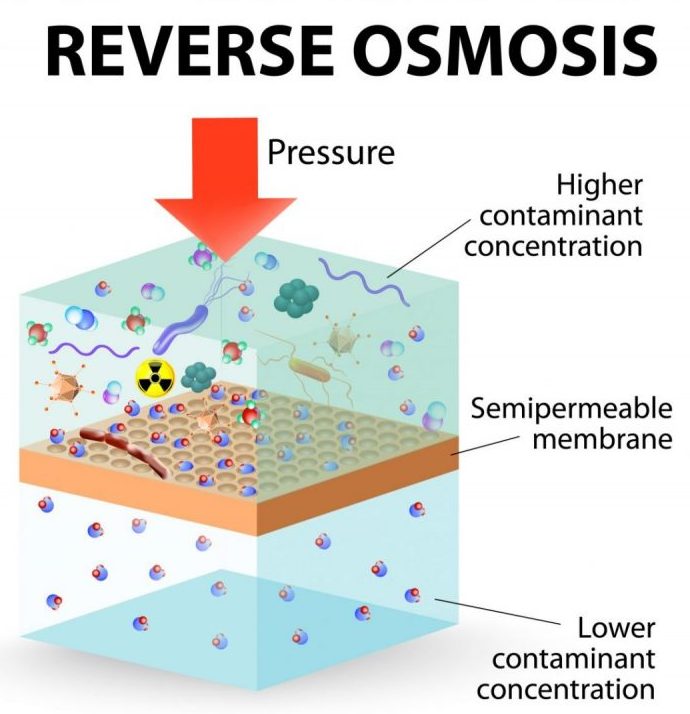
Water Filter Cartridges for Coffee Machines: Speciality filter cartridges can help reduce high mineral and acidity levels and can help tailor coffee machine feed water with regard to pH and carbonate hardness.

